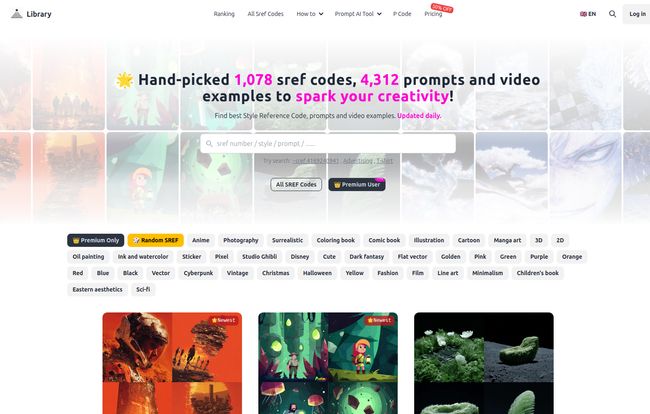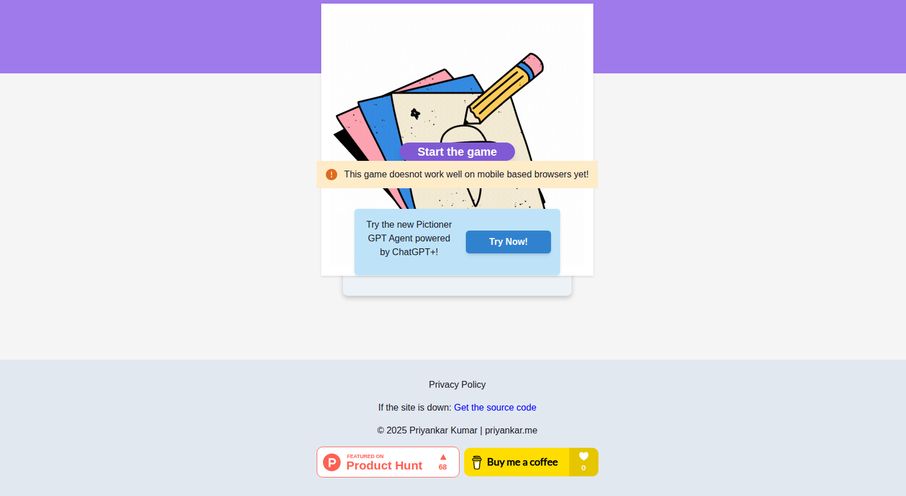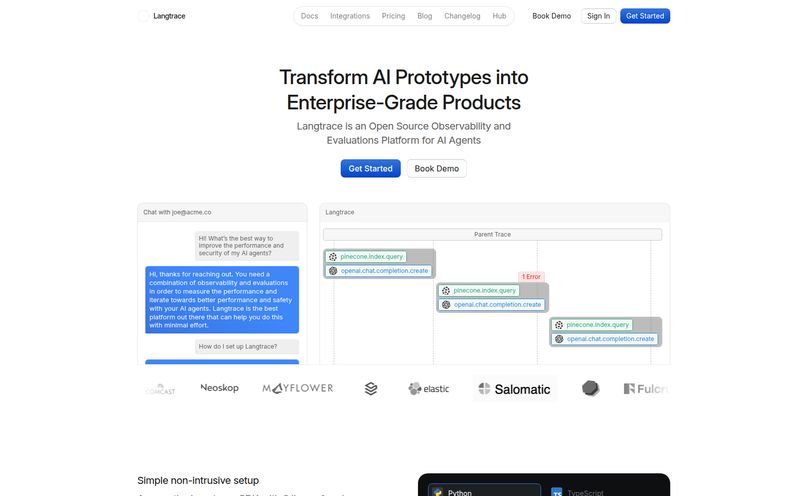If you've spent any serious time with Midjourney, you know the dance. You have a brilliant idea in your head, a perfect aesthetic you're chasing. You spend the next hour (or three) wrestling with prompts, tweaking keywords, and sacrificing VRAM to the AI gods, only to get something that’s… close. But not quite it.
It’s the digital artist’s version of trying to describe a dream. You know what you want, but the words fail you. I've been there more times than I can count. The endless scrolling through X and Discord, seeing a jaw-dropping image and thinking, “HOW?! What magic words did they use?”
For a while now, the --sref (Style Reference) command in Midjourney has been a game-changer. It lets you point to an image and say, “Hey, make it look like this.” But even that has its limits. You need a good reference image, and sometimes it picks up on the wrong things. What we really needed was a way to bottle the essence of a style. And I think I’ve found the place that does it.
Enter Midjourneysref.com. I stumbled upon it a few weeks back, and I’ve gotta admit, I was skeptical. Another prompt library? The internet is littered with them. But this one felt different. It wasn’t just about prompts; it was about style codes. Hand-picked, curated, and ready to go. So, I decided to do a deep dive and see if this tool is the secret weapon my workflow has been screaming for.
So, What Exactly is Midjourneysref?
Think of it less like a book of recipes and more like a professional chef's spice rack. Or maybe a Pantone color book, but for AI art styles. Midjourneysref.com is a massive, curated library of Midjourney Style Reference codes. These aren't just random prompts. Each entry is a specific --sref code that corresponds to a consistent, repeatable aesthetic, complete with example images and, crucially, the full prompts used to create them.
It’s designed to solve that core problem of consistency and discovery. Instead of trying to describe “a gritty, neo-noir comic book style with halftones and heavy inks,” you can just find a style that matches, grab its code, and plug it in. It’s a shortcut through the forest of trial and error.
First Impressions and Finding Your Way Around
Landing on the homepage, I was pleasantly surprised. It’s clean. Visual. No fluff. The main focus is a giant, scrollable gallery of art styles. Each card shows a collage of images generated with a specific sref code, giving you an immediate feel for its vibe.

Visit Midjourneysref
The categorization is where it really starts to shine for me. You can filter by tags like Anime, Pixel, Studio Ghibli, Surrealistic, Dark Fantasy, and even practical things like Sticker or Coloring book. This is so much better than aimlessly searching for keywords. Need a vintage look? Click the “Vintage” tag. Boom. Dozens of options, from 1950s ad illustrations to faded film photography.
The search bar is also pretty smart. You can punch in a style, a mood, or even an sref number if you have one you like. It just works. The whole experience feels designed by someone who actually uses Midjourney, which is a refreshing change.
The Real Magic: It’s All About the Codes and Prompts
Okay, let's get into the meat of it. Clicking on any style card takes you to a dedicated page for that sref code. This is where Midjourneysref earns its keep. You don’t just get the code. You get:
- Example Images: A gallery showing how the style applies to different subjects (portraits, landscapes, objects).
- Complete Prompts: This is the big one. For each example image, they give you the exact prompt that was used. You see the subject, the action, and how the sref code works with it.
- One-Click Copy: A handy button to copy the code or the full prompt right to your clipboard.
This is a complete game changer. It demystifies the whole process. I’ve learned more about effective prompting in a few days of browsing this site than I did in months of reverse-engineering images I saw on social media. It creates this “aha!” moment where you see why a certain prompt works so well with a particular style. It's an educational tool as much as a resource library.
Going Beyond a Simple Library with AI Tools
Just when I thought it was just a fantastic library, I noticed the “AI Tool” section in the nav bar. They’ve built a couple of utilities right into the platform that add another layer of value.
Image to Prompt Generator
This does what it says on the tin. You can upload any image, and their AI will try to generate a detailed Midjourney prompt to describe it. It's not perfect—no tool is—but it's a brilliant starting point if you have a reference image and are struggling to find the right words.
Midjourney Prompt Helper
This feels like a little AI brainstorming partner. You can feed it a basic idea, and it helps you flesh it out with more descriptive language and a better structure for Midjourney. I’ve used it to turn a simple idea like “a robot in a forest” into something far more evocative, like “A weathered, moss-covered android stands silently in a sun-dappled, ancient forest, glowing optic sensors cutting through the mist.” Much better, right?
Alright, Let's Talk Money: Is the Premium Worth It?
Of course, the best stuff is behind a paywall. The site lets you browse a lot of the styles for free, which is great for getting a feel for it. But to get the full prompts and access to the entire, ever-growing collection, you need to become a premium user. So, what's the damage?
Looking at their pricing page, there are two main options. An annual subscription that breaks down to about $3.50 a month, or a Lifetime Access deal for a one-time payment of $89. No subscription, just pay once and you're in forever.
In my opinion, for anyone who uses Midjourney more than a couple times a week, the lifetime deal is a no-brainer. The time it saves me from prompt-wrestling alone is worth more than that. The site makes a pretty clear case for it:
| Without Premium | With Premium |
|---|---|
| Scouring social media for new sref codes | Daily updates with the latest sref codes |
| Getting partial results with incomplete prompts | Access to complete prompts for perfect replication |
| No organization or categorization | Browse styles by intuitive categories |
| Manually saving codes in a messy text file | Save your favorites right on the site |
The social proof they feature on the site, with real creators on X praising the tool, adds a lot of weight. It's not just some faceless corporation; it feels like a tool built by the community, for the community.
Who Is This For? And Who Should Pass?
So, who should drop what they’re doing and check this out?
If you're a content creator, digital artist, designer, or marketer who uses Midjourney regularly, this is for you. It will speed up your workflow, give you a massive dose of inspiration, and help you achieve a level of artistic consistency that's tough to get otherwise. If you've ever felt that dreaded “prompt fatigue,” this is the cure.
Who should maybe hold off? If you’re a total Midjourney beginner—like, you just figured out how to use the /imagine command yesterday—this might be a bit much. I’d suggest getting comfortable with the basics first. Also, if you’re a super casual user who only makes an image once in a blue moon, the free version might be all you need.
My Final Verdict: The Secret Weapon is Real
After spending a good amount of time with Midjourneysref.com, I can confidently say its a core part of my AI toolkit now. It’s not just a library; it’s an accelerator. It bridges the gap between the vision in your head and the final image on your screen. It’s like having a cheat code that not only helps you win but also teaches you how to play the game better.
The biggest benefit is the time saved and the inspiration gained. No more endless searching. No more frustrating trial and error. Just a beautifully organized, constantly updated world of styles at your fingertips. For me, that’s more than worth the price of admission.
Frequently Asked Questions
What is a Midjourney Style Reference (SREF) Code?
A Midjourney SREF code is a numerical code that you use with the --sref command. It tells Midjourney to apply a specific, consistent artistic style to your generated image, separate from the content of your prompt.
How do I use an SREF Code from the site?
It's super simple. Find a style you like on Midjourneysref.com, copy the code (e.g., --sref 12345678), and paste it at the end of your own prompt in Midjourney. That's it!
What makes this site different from a regular prompt website?
Most prompt sites just give you text prompts. Midjourneysref focuses on the style. It provides curated SREF codes that control the entire aesthetic (texture, color, composition) and then gives you the full text prompts as examples of how to use that style effectively.
Can I save my favorite codes on the site?
Yes! With a premium account, you can click a heart icon on any style you like, and it will be saved to your personal, pre-organized collection for easy access later.
Can you extract sref codes from any image?
Not directly. The sref codes on Midjourneysref are discovered and curated by their team. While Midjourney's /describe feature or the site's own Image to Prompt tool can help you analyze an image, they don't provide a direct sref code. This curation is a major part of the site's value.
Is the one-time payment really for lifetime access?
Based on their pricing page, yes. The Lifetime Access option is a one-time purchase that gives you all premium features, including future updates, with no recurring subscription fees.
Reference and Sources
- Midjourneysref.com - The main tool reviewed in this article.
- Midjourney Official Website - The AI image generator platform.
- Midjourney's Official Documentation on Style Reference - For a technical look at how the --sref parameter works.



